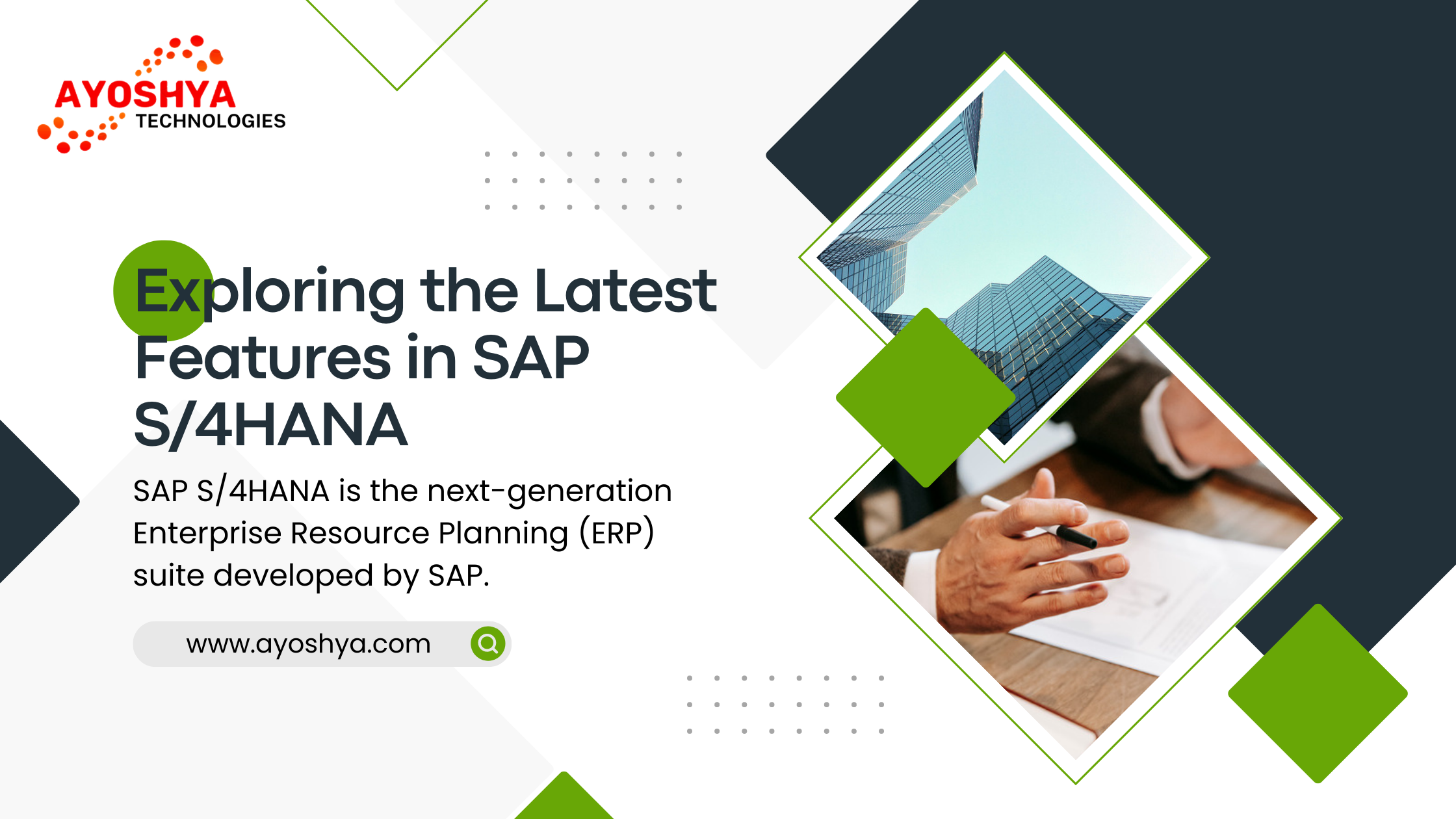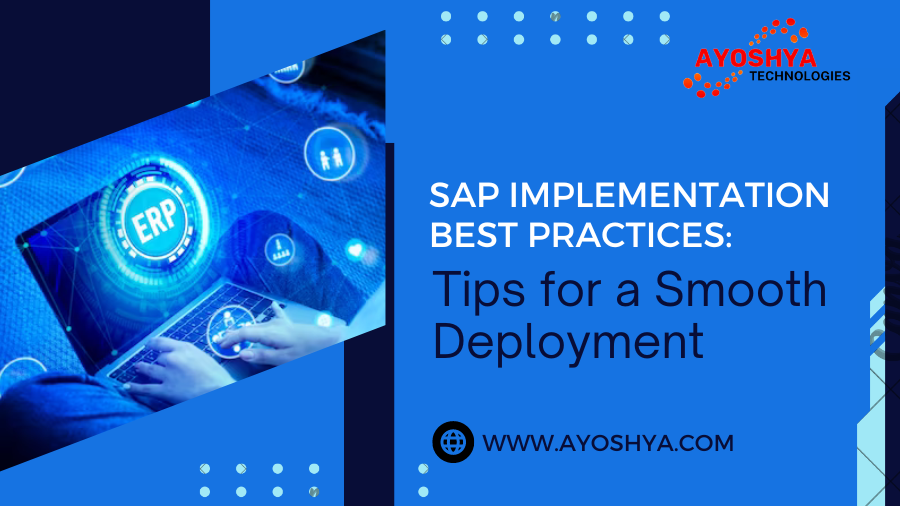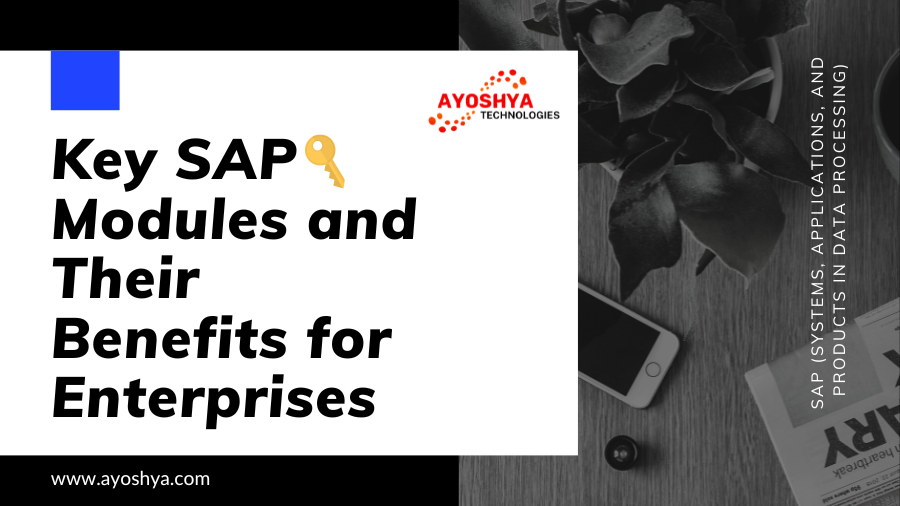SAP S/4HANA: EXPLORING THE LATEST FEATURES
Introduction to SAP S/4HANA:
SAP S/4HANA is the next-generation Enterprise Resource Planning (ERP) suite developed by SAP. It is designed to provide businesses with real-time, intelligent insights, and streamline processes for enhanced efficiency and decision-making. As an advanced ERP solution, SAP S/4HANA brings a host of innovative features that cater to various business needs across industries.
SAP S/4HANA: The Next-Generation ERP:
Evolution of SAP ERP: SAP S/4HANA is the successor of the traditional SAP ERP system. It leverages the power of the SAP HANA in-memory database, enabling businesses to process vast amounts of data in real-time.
Key Features of SAP S/4HANA: SAP S/4HANA offers several cutting-edge features, such as improved user experience through SAP Fiori, a simplified data model, embedded analytics, and advanced supply chain management capabilities.
SAP Fiori: Revolutionizing User Experience:
Intuitive User Interface: SAP Fiori provides a modern and intuitive user interface, enhancing user productivity and engagement. The Fiori apps are role-based, allowing users to access relevant information and tasks with ease.
Mobile and Cross-Platform Access: SAP Fiori apps are responsive and can be accessed on various devices, including desktops, tablets, and smartphones. This mobile accessibility ensures that users can stay connected and productive on the go.
Simplified Data Model: The Power of HANA:
In-Memory Database: SAP S/4HANA operates on the SAP HANA in-memory database, which accelerates data processing and analysis. This in-memory computing allows for real-time data access and analysis, enabling businesses to make data-driven decisions swiftly.
Real-Time Analytics: With the SAP HANA database, real-time analytics becomes a reality. Businesses can perform complex analytics on large datasets instantaneously, gaining valuable insights without any latency.
Embedded Analytics: Data-Driven Decision Making:
Integrated Reporting and Analytics: SAP S/4HANA embeds analytics directly into business processes, providing users with real-time insights at the point of action. This integration ensures that users can make informed decisions without toggling between different applications.
Predictive Analytics and Machine Learning: SAP S4HANA leverages predictive analytics and machine learning capabilities to offer intelligent insights. The system can predict outcomes, recommend actions, and automate repetitive tasks, improving overall efficiency.
Advanced Supply Chain Management:
Improved Planning and Forecasting: SAP S/4HANA’s advanced supply chain management features enable businesses to optimize demand planning and forecasting. This ensures that the right products are available at the right time and in the right quantities.
Enhanced Warehouse Management: The ERP suite enhances warehouse management with intelligent features such as automated stock tracking, optimized picking routes, and real-time inventory visibility.
Intelligent Finance and Controlling:
Real-Time Financial Insights: SAP S/4HANA provides real-time financial data, enabling finance teams to access up-to-date information for accurate financial reporting and analysis.
Automated Financial Processes: The ERP system automates routine financial processes such as accounts payable and receivable, streamlining financial operations and reducing manual effort.
Streamlined Procurement and Inventory Management:
Centralized Procurement: SAP S4HANA centralizes procurement activities, allowing businesses to negotiate better contracts, optimize purchasing processes, and achieve cost savings.
Efficient Inventory Optimization: The ERP suite offers sophisticated inventory management tools that help optimize stock levels, reduce carrying costs, and prevent stockouts.
Enhanced Sales and Customer Experience:
Integrated Sales Processes: SAP S4HANA integrates sales processes, enabling seamless quote-to-cash operations and providing a unified view of customer interactions.
Personalized Customer Interactions: With real-time customer data and analytics, businesses can offer personalized services and experiences, strengthening customer relationships.
Innovations in Manufacturing and Production:
Smart Manufacturing: SAP S4HANA enables smart manufacturing processes, integrating production with real-time data for better production planning and execution.
Agile Production Planning: The ERP system supports agile production planning, allowing businesses to respond quickly to market demands and changes in customer preferences.
SAP S/4HANA Cloud: The Future of ERP:
Cloud Deployment Benefits: SAP S4HANA Cloud offers the advantage of cloud-based deployment, ensuring easy scalability, automatic updates, and reduced infrastructure costs.
Scalability and Flexibility: The cloud-based ERP solution is highly scalable, allowing businesses to adapt to changing demands and quickly add new users and functionalities.
Migration to SAP S/4HANA:
Planning the Migration: Migrating to SAP S4HANA requires careful planning and assessment of the existing infrastructure and data.
Best Practices and Considerations: Following best practices, conducting a thorough impact analysis, and involving key stakeholders are essential for a successful migration.
Conclusion:
SAP S/4HANA is a game-changer in the world of enterprise resource planning. With its advanced features, real-time analytics, and user-friendly interface, it empowers businesses to embrace digital transformation and stay competitive in the dynamic market. By exploring the latest features in SAP S4HANA, organizations can unlock new possibilities and drive growth, efficiency, and innovation in their operations.
FAQs:
- Is SAP S/4HANA suitable for small businesses? Yes, SAP S4HANA offers different deployment options, including SAP S4HANA Cloud, which is well-suited for small and medium-sized businesses.
- What are the advantages of SAP S/4HANA’s in-memory computing? In-memory computing in SAP S4HANA enables real-time data access and analysis, accelerating business processes and decision-making.
- Can businesses choose specific SAP S4HANA modules based on their requirements? Yes, businesses can choose specific SAP S/4HANA modules that align with their operational needs and priorities.
- How does SAP S/4HANA support intelligent finance management? SAP S/4HANA’s intelligent finance management offers real-time financial insights and automates financial processes, enabling finance teams to work more efficiently.
- What are the benefits of migrating to SAP S4HANA Cloud? Migrating to SAP S4HANA Cloud offers benefits like easy scalability, reduced infrastructure costs, and automatic updates, making it an attractive option for businesses seeking flexibility and agility.





